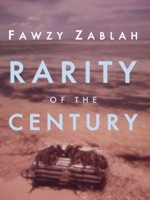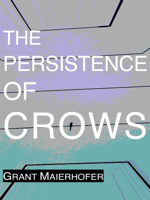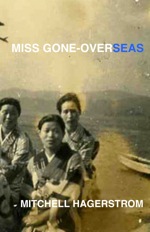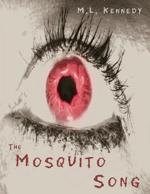 The purpose of Hou Hsiao-Hsien’s Café Lumière is clear from the start, as it states in its dedication, “For the centenary of Yasujiro Ozu’s birth,” following the intro-branding sequence of Ozu’s old studio. From this, we know that it will be a tribute film to Ozu and his work. This labeling of the film immediately poses an interesting problem. By paying homage to Ozu, it would seem that this would automatically limit the scope and possibility of what Hou can do in this film. Instead of having the freedom to make a film however he wants in his usual style, he must instead follow what he thinks Ozu would have done. There is the distinct possibility that the film would end up being a collection of Ozu’s stylistic cues, probably paling in comparison to the original, as most copies are.
The purpose of Hou Hsiao-Hsien’s Café Lumière is clear from the start, as it states in its dedication, “For the centenary of Yasujiro Ozu’s birth,” following the intro-branding sequence of Ozu’s old studio. From this, we know that it will be a tribute film to Ozu and his work. This labeling of the film immediately poses an interesting problem. By paying homage to Ozu, it would seem that this would automatically limit the scope and possibility of what Hou can do in this film. Instead of having the freedom to make a film however he wants in his usual style, he must instead follow what he thinks Ozu would have done. There is the distinct possibility that the film would end up being a collection of Ozu’s stylistic cues, probably paling in comparison to the original, as most copies are.
Fortunately, that is not the case. To be sure, there are the obvious visual cues that are nods to Ozu. In the first shot of the film, we see a train pass from the left side of the screen to the right, an image reminiscent of Ozu’s Tokyo Story. In that film, the train represented change – the technological change that brought with it changes to the structure of society and family. Traditional emphasis on the family slowly gave way in the face of westernization to individualization; we see the parents sadly contemplating the obsolescence of their values and way of life, as their children busy themselves with their own nine to five jobs and rarely visit. This focus on the passage of time and the differences between generations is also a theme of Café Lumière, and we see an almost obsessive interest in the trains and metro of Tokyo.
But the most notable nod to Ozu is the “Tatami Shot” in which the camera is placed at waist height, facing a traditionally Japanese room in which there are usually people sitting on the tatami mat floor. The shot is framed in such a way that the natural lines of the room are symmetrically aligned to the borders of the frame, facilitating frames within frames, if the scene requires it. The purpose of this particular view is to put the audience on the same level as the characters sitting, to place the viewer right into whatever conversation is going on. In this way, it encourages the viewer to participate and makes it easier to relate to the characters. Similar to Ozu, these scenes are shot at normal focal length or in telephoto zoom, which actually contrasts with Hou’s style. With Hou, we are used to expansive, wide angle shots, dwarfing the characters within their environment.

- Yasujiro Ozu Tatami Shot ::Tokyo Story::
However, the film still retains Hou’s unique flavor. Unlike Ozu, whose audience is asked to relate to the characters within the film, the role of the audience in Hou’s films are usually that of an observer, and in this film it is no different. Whereas in his early films, we would contemplate the spacious, meticulously composed wide-angle shots and wonder at the characters’ struggle against his/her surroundings, here we contemplate the characters’ behavior within a more crowded, bustling world, with the camera occasionally panning to take in the scope of the surroundings. Ozu’s Tokyo Story is very scripted, in terms of framing, dialogue, and editing, but Café Lumière refuses to do any of that. Instead, the shots are generally static, each one an almost unbearingly long take. There is not even cutting during dialogue sequences – no closer up shots or shot-reverse shot cutting.
Between the two films, this difference is subtle, yet important in revealing a major distinction between the two directors, a distinction that is itself a product of time, a difference of generations. Ozu’s is one of big studio productions – very controlled, machine-like production with strict divisions of labor and a certain requirement to adhere to conventions. Hou’s is on the independent end – more improvisational, live locations, more freedom to push the cinematic boundaries. The difference in method – participant versus observer – is Hou’s choice to pursue the film on his own terms, while still keeping in harmony with Ozu’s themes and allowing for certain stylistic homages like the tatami shot.
The other major difference between the two directors is how each lets the theme of change play out. In both, change has made it difficult for the older generation to communicate with the younger. But in Tokyo Story, there is a note of hope in the end – things change, but the family realizes it and more or less accepts it. That is part of the beauty of life. One could argue that there is even a sort of reconciliation. In contrast, Café Lumière ends on an uncertain note. Perhaps fifty or so years of modernization has cast doubt on the effect of technological progress on mankind.
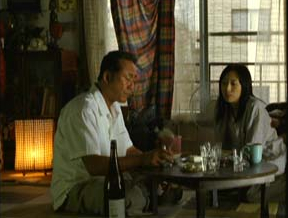
- Hou Hsiao-Hsien Tatami Shot ::Café Lumière::
Repeatedly in the film we see the protagonist, played by J-pop star Yo Hitoto, on her own. Her parents have trouble communicating with her, as does a bookstore employee whom she seeks research help from. She tells her parents that she’s pregnant but refuses to marry the father and refuses help from the parents. The father is Taiwanese, and we never see him. (Maybe her unborn baby is symbolic of this film, with its Japanese forebear and current Taiwanese director?) She is researching a Taiwanese musician who moved to Japan in the 1930’s, but the research does not go anywhere. Throughout the film, Hou’s camera follows her as she weaves her way through the crowds and contemplates in silence on the subway. When she is with others, few words are exchanged.
In the end, we do not find out if she finishes her research. In fact, none of the storylines are completed. The family does not reconcile with the daughter and the awkward silence between them remains. Interestingly, none of the family members ever look each other in the eye.
We also never find out if she falls in love with the bookstore employee. Just as the many subways shown in the film follow their own path and never intersect, we see the protagonist and the bookstore worker each on separate subways heading in the same direction, though they do not notice each other. Even when the guy serendipidously bumps into the girl on the subway at the end, she is asleep and he has headphones on.
The final shot shows them on the subway platform waiting, each staring at the audience, but not at each other, as a subway zooms by in between them and the audience, slightly obscuring the view.
This decision by Hou to express his own uncertain feelings on Ozu’s theme of change is another important choice to pursue the film on his own terms, yet still honoring the previous director’s achievements. In keeping the basics the same yet staying true to his style, Hou, in an interview, states that this accentuates what it was about Ozu’s style that made it unique, which is perhaps the ultimate homage.
::Images pilfered from Girish, Moviediva, DVD Times, and Asia Pacific Arts::




